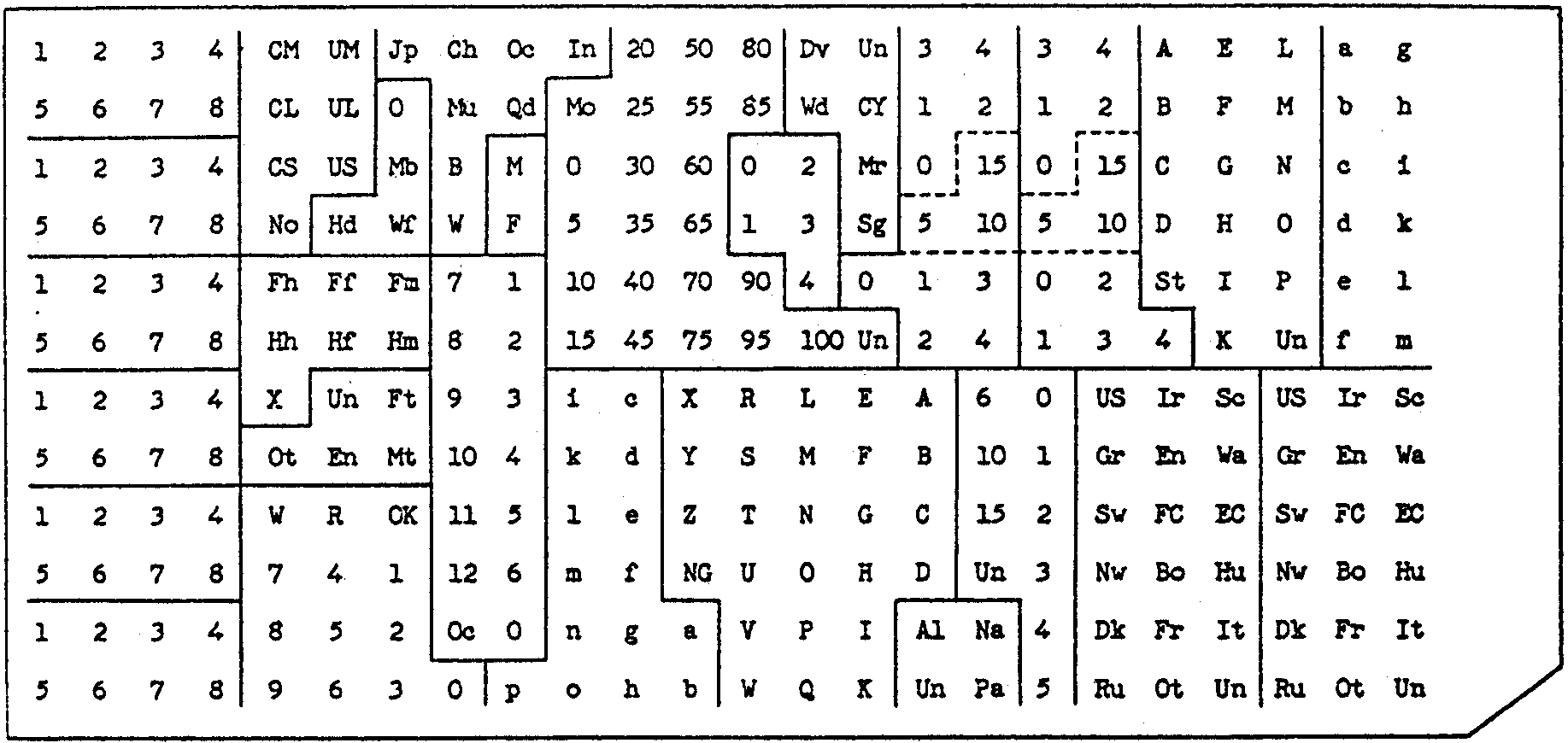f(0) = 5
Δf(0) = 2
Δ2f(0) = 3
Δ3f(0) = 1
-
Herman Hollerith's tabulating machine
- ENIAC

http://www.columbia.edu/cu/computinghistory/census-tabulator.html
- What do you think is being encoded in the top middle section
with codes Dv, Wd, Sg, etc.? Try to
decode as many of these abbrieviations as you can.
- What do you think is being encoded in the two sections in the
lower right (with codes Us, Ir, Sc, etc.)?
Try to decode as many of these abbreviations as you can.
- Explain how age is encoded on this card.
- [HARDER] What is being encoded by the section with codes CM, UM, etc.? HINT: Remember that this is the 1890 census. Something significant happened prior to this census.
-
An electronic device has 128GB of memory.
It is connected to a communication port that receives
data at a rate of 256Mbps. How long will it take to
fill up the memory of this device if it starts off
as empty?
- Moore's Law states that the processing power of a computer doubles approximately every 2 years. Based on this observation, how many years will it take to have a computer that is approximately a thousand times more powerful than today's computer?
- A common theme in computing is dealing with advances in technology
that change exponentially. Exponential
changes are often hard to see at first but become very obvious once it's
too late to adapt. Give an example from this chapter
of a company that didn't see exponential changes in its core business,
resulting in massive layoffs and a major loss in revenue.
-
Eliot Spitzer, former governor of New York, was forced to resign due to
a prostitution scandal. How was his involvement detected digitally?
-
Years ago, people copied songs on to cassette tapes and shared them with
their friends, yet the recording industry didn't pursue these people
for copyright infringement. Today, however, sending a friend a
copyrighted mp3 file can get you into trouble. Why is the response
different now?
- Once digital data about you is stored, can it be completely erased? Why or why not?